Hey I’m Inzamul, Welcome to my Article How to Set Up Your Home Office for Maximum Productivity.
Working from home can be an excellent way to boost productivity with fewer distractions and more flexibility in your schedule. However, simply working from your couch or kitchen table is unlikely to lead to long-term success. Setting up an intentional, dedicated workspace will allow you to stay organized and focused when working remotely. Here is your info about How to Set Up Your Home Office for Maximum Productivity
Unlock Your Online Success! Watch Our Exclusive Video for FREE and Start Earning Today!

Designate a Dedicated Workspace:
When transitioning to remote work or starting a home-based business, one of the first steps to success is establishing a dedicated workspace. While the allure of working from the comfort of your couch or bed may seem appealing, the reality is that these spaces are often rife with distractions and can hinder productivity. Designating a specific area in your home solely for work purposes lays the foundation for a focused and efficient work environment. Here’s why having a dedicated workspace is crucial and how to create one effectively:
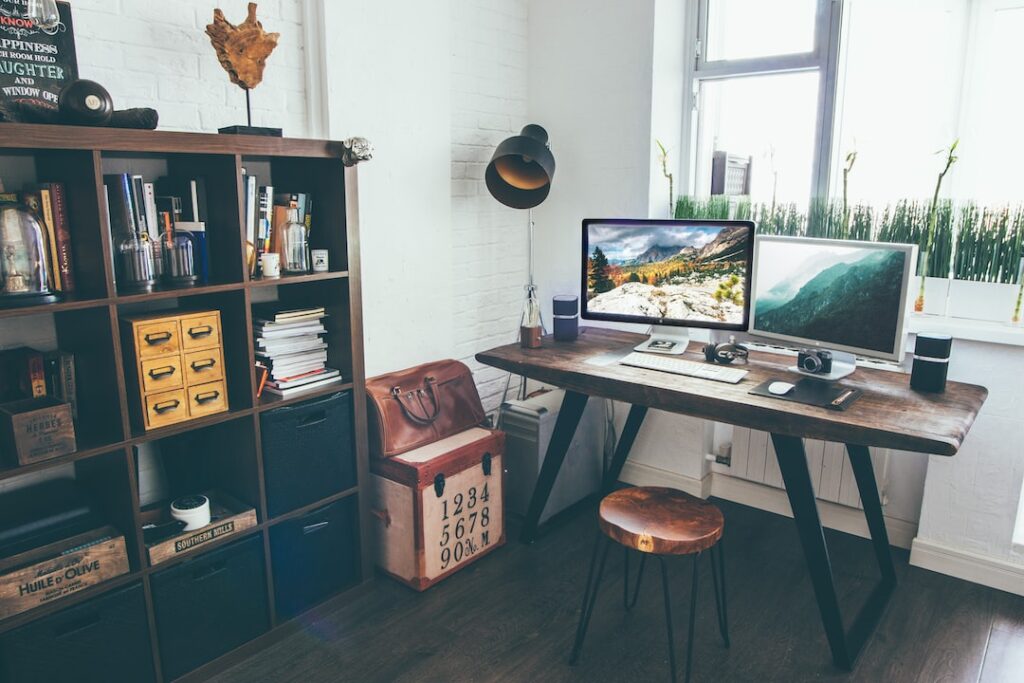
Why Designate a Dedicated Workspace?
- Mental Separation: Creating a designated workspace helps establish a clear boundary between work and personal life. When you enter this space, it signals to your brain that it’s time to focus and be productive. Conversely, leaving the workspace at the end of the workday allows you to mentally disconnect and unwind, promoting a healthier work-life balance.
- Minimize Distractions: Working in a dedicated space minimizes the likelihood of distractions from household activities, family members, or pets. It provides a controlled environment conducive to concentration and productivity, enabling you to tackle tasks with greater efficiency and focus.
- Boost Productivity: A dedicated workspace is optimized for work-related activities, offering the necessary amenities and resources to support productivity. By having all your work tools and materials within reach, you can streamline your workflow and eliminate the need to constantly search for items or set up temporary workstations.
Tips for Creating a Dedicated Workspace:
- Choose the Right Location: Select a quiet and relatively secluded area in your home where you can set up your workspace. Ideally, this space should be away from high-traffic areas and household distractions. Spare rooms, alcoves, or corners of living areas can be ideal choices.
- Invest in Quality Furniture: Invest in ergonomic furniture such as a comfortable chair and a suitable desk that supports good posture. An ergonomic setup reduces physical strain and discomfort, allowing you to work comfortably for extended periods.
- Personalize Your Space: Make your workspace inviting and conducive to productivity by adding personal touches such as artwork, plants, or motivational quotes. Surrounding yourself with items that inspire you can enhance creativity and morale.
- Organize and Declutter: Keep your workspace tidy and organized to minimize distractions and promote focus. Invest in storage solutions such as shelves, drawers, and organizers to keep clutter at bay and maintain a clean work environment.e activities or using the space for non-work purposes to maintain focus and discipline.
By designating a dedicated workspace in your home, you can create an environment that fosters productivity, concentration, and professional success. Whether it’s a small corner or a dedicated home office, investing time and effort into setting up your workspace can yield significant dividends in terms of efficiency and work satisfaction. Embrace the opportunity to tailor your workspace to your preferences and needs, and watch as it becomes a catalyst for your productivity and success.
Invest in Ergonomic Furniture:
Comfort is crucial for sustained productivity. Invest in a supportive chair and ergonomic desk to ensure proper posture and minimize strain on your body during long hours of work. Additionally, consider adding accessories like monitor stands, keyboard trays, and footrests to optimize your workstation ergonomics further. A comfortable workspace reduces distractions and promotes better concentration and efficiency.
Unlock Your Online Success! Watch Our Exclusive Video for FREE and Start Earning Today!
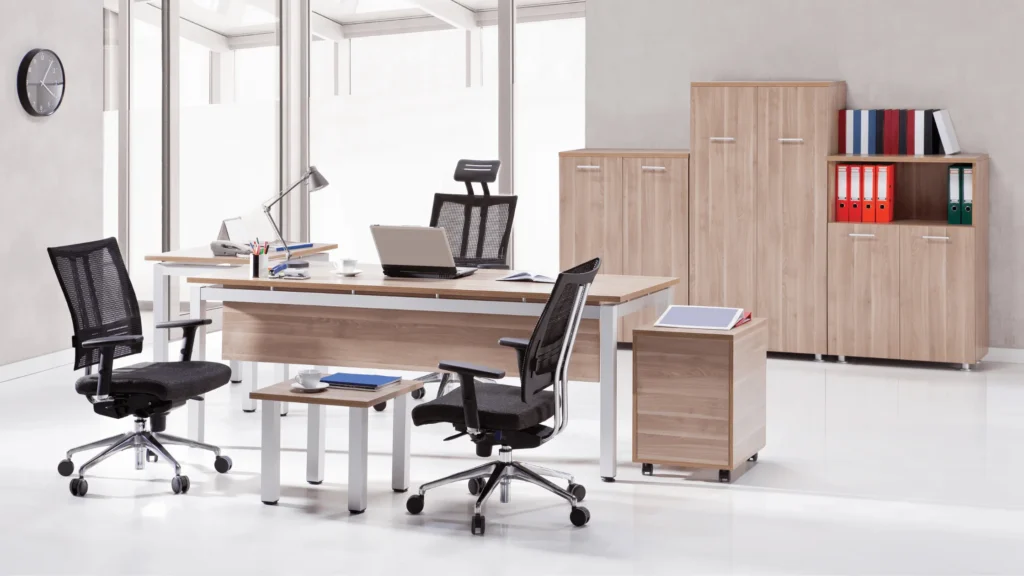
Why Invest in Ergonomic Furniture?
- Supports Proper Posture: Ergonomic furniture is designed to support the natural curvature of the spine and promote proper alignment of the body while sitting or standing. A well-designed ergonomic chair, for example, provides adequate lumbar support and encourages an upright sitting position, reducing the risk of musculoskeletal issues such as back pain and neck strain.
- Reduces Discomfort and Fatigue: Traditional office furniture often lacks the adjustability and support needed to accommodate individual preferences and body types. Ergonomic furniture, on the other hand, offers customizable features such as adjustable seat height, armrests, and backrests, allowing users to tailor their workstation to their unique needs. By minimizing discomfort and fatigue, ergonomic furniture enables users to maintain focus and productivity throughout the workday.
- Enhances Circulation and Blood Flow: Prolonged sitting in poorly designed chairs can lead to decreased circulation and increased pressure on blood vessels, resulting in discomfort and potential health risks. Ergonomic chairs with features like seat depth adjustment and tilt functionality promote dynamic sitting and encourage movement, preventing stagnation and improving blood flow to the muscles and extremities.
- Boosts Productivity and Efficiency: A comfortable and ergonomic workspace creates an environment conducive to productivity and concentration. By reducing distractions and physical discomfort, ergonomic furniture allows individuals to focus their energy and attention on tasks, resulting in improved efficiency and performance. Investing in ergonomic solutions can ultimately translate into greater work output and job satisfaction. How to Set Up Your Home Office for Maximum Productivity
Tips for Choosing Ergonomic Furniture:
- Select an Adjustable Chair: Look for a chair with adjustable seat height, lumbar support, armrests, and backrest angle. These features allow you to customize the chair to your body dimensions and preferences, ensuring optimal comfort and support.
- Prioritize Comfort and Quality: Invest in high-quality ergonomic furniture made from durable materials that provide long-term comfort and support. While cost may be a consideration, prioritize furniture that offers the necessary features and durability to withstand daily use without compromising on comfort.
- Consider Standing Options: Standing desks or height-adjustable desks offer the flexibility to alternate between sitting and standing positions throughout the day, promoting movement and reducing the risks associated with prolonged sitting. If space and budget allow, consider incorporating a standing option into your home office setup.
- Accessorize for Ergonomics: In addition to a supportive chair and desk, consider ergonomic accessories such as keyboard trays, monitor stands, and footrests to further enhance your workstation setup. These accessories can help maintain proper alignment and reduce strain on the wrists, neck, and lower back.
- Test Before You Buy: Whenever possible, try out ergonomic furniture before making a purchase to ensure compatibility with your body and comfort preferences. Many furniture retailers offer showroom displays or trial periods for testing out chairs and desks before committing to a purchase.
Investing in ergonomic furniture is an investment in your health, comfort, and productivity. By prioritizing ergonomics in your home office setup, you can create a workspace that promotes well-being and enhances your ability to perform at your best. Whether it’s a supportive chair, adjustable desk, or ergonomic accessories, make thoughtful choices that prioritize comfort and functionality, and reap the rewards of a more comfortable and productive work environment.
Optimize Lighting and Ventilation:
Natural light and good ventilation can significantly impact your mood and cognitive function. Position your desk near a window to maximize natural light exposure and improve alertness. If natural light is limited, invest in high-quality artificial lighting that mimics natural daylight to reduce eye strain and fatigue. Adequate ventilation is equally important for maintaining air quality and mental clarity.

Importance of Lighting:
- Natural Light Benefits: Natural light has numerous benefits, including boosting mood, enhancing productivity, and regulating the body’s circadian rhythms. Position your desk near a window to maximize natural light exposure throughout the day. Sunlight can help you stay alert and focused while reducing the reliance on artificial lighting sources.
- Artificial Lighting Considerations: In the absence of natural light or during evening hours, artificial lighting becomes essential. Choose lighting fixtures that provide even and adjustable illumination, such as desk lamps with adjustable brightness settings or overhead lights with dimmer switches. Avoid harsh glare or shadows that can strain the eyes and cause discomfort.
- Task Lighting: Supplement ambient lighting with task lighting focused on your workspace. Adjustable desk lamps or under-cabinet lighting can illuminate specific areas where you perform tasks, such as reading documents or typing on the keyboard. Task lighting helps reduce eye strain by providing targeted illumination where needed. How to Set Up Your Home Office for Maximum Productivity
- Blue Light Considerations: Be mindful of blue light emitted by electronic devices such as computers, smartphones, and tablets. Prolonged exposure to blue light, especially in the evening, can disrupt sleep patterns and cause eye strain. Consider using blue light filters or adjusting screen settings to reduce blue light emission, particularly during late-night work sessions.
Importance of Ventilation:
- Air Quality: Proper ventilation is essential for maintaining good indoor air quality, which is vital for respiratory health and cognitive function. Poor ventilation can lead to the accumulation of indoor pollutants, allergens, and stale air, negatively impacting concentration and productivity. Ensure adequate ventilation in your home office to promote fresh air circulation and remove pollutants.
- Temperature Regulation: Effective ventilation helps regulate temperature and humidity levels in your workspace, creating a comfortable and conducive environment for work. Excessive heat or humidity can lead to discomfort and decreased productivity, while cold temperatures can impair concentration and dexterity. Use fans, air purifiers, or air conditioning systems to maintain optimal temperature and humidity levels.
- Natural Ventilation: Whenever possible, take advantage of natural ventilation by opening windows and doors to allow fresh air to circulate. Natural ventilation not only improves air quality but also creates a sense of connection to the outdoors, which can enhance mood and mental well-being.
- Air Purification: Consider using air purifiers equipped with HEPA filters to remove airborne particles, allergens, and contaminants from the air. Air purifiers can help mitigate indoor air pollutants and allergens, promoting a healthier and more productive workspace, particularly for individuals with allergies or respiratory sensitivities.
Tips for Optimizing Lighting and Ventilation:
- Positioning: Arrange your workspace to maximize natural light exposure while minimizing glare and shadows. Place desks perpendicular to windows to avoid direct sunlight and use curtains or blinds to control brightness levels. Position lighting fixtures strategically to provide even illumination without causing glare or discomfort.
- Maintenance: Regularly clean lighting fixtures and windows to remove dust and debris that can obstruct light transmission. Similarly, maintain ventilation systems, filters, and air purifiers to ensure optimal performance and air quality. Replace bulbs or filters as needed to maintain efficiency and effectiveness.
- Flexible Solutions: Invest in adjustable lighting fixtures and portable fans or air purifiers that offer flexibility in controlling lighting and ventilation based on your preferences and environmental conditions. Having adjustable options allows you to tailor your workspace to your specific needs and comfort level throughout the day. How to Set Up Your Home Office for Maximum Productivity
- Personal Comfort: Pay attention to your personal comfort and preferences when optimizing lighting and ventilation. Experiment with different lighting levels, ventilation settings, and air quality solutions to find what works best for you. Creating a comfortable and customized workspace enhances your overall well-being and productivity.
By prioritizing lighting and ventilation in your home office setup, you can create a healthier, more comfortable, and productive work environment. Whether it’s maximizing natural light exposure, improving air quality, or integrating adjustable solutions, thoughtful consideration of these elements can make a significant difference in your work performance and overall satisfaction. Take the time to assess and optimize your home office environment, and reap the benefits of a workspace that supports your well-being and productivity.
Declutter and Organize:
A cluttered workspace can clutter the mind, leading to distractions and decreased productivity. Keep your home office organized by decluttering regularly and maintaining a tidy workspace. Invest in storage solutions such as shelves, cabinets, and desk organizers to keep essential items within reach while minimizing visual distractions. A clean and organized environment fosters a clear mind and enhances productivity.
Unlock Your Online Success! Watch Our Exclusive Video for FREE and Start Earning Today!
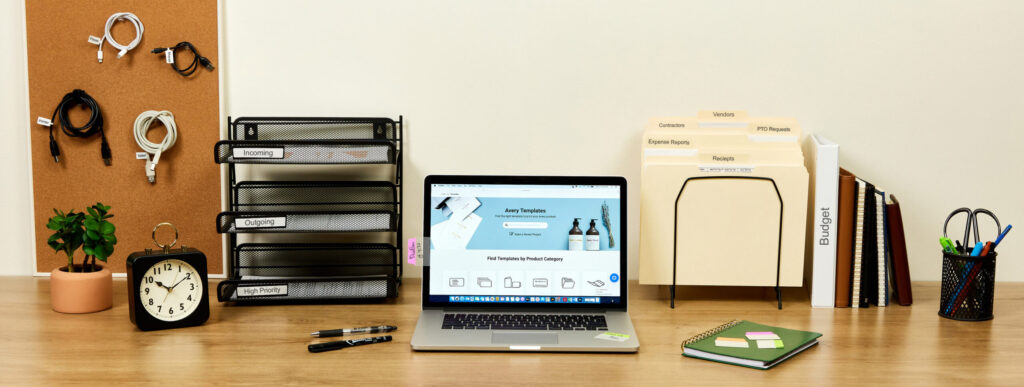
Why Declutter and Organize?
- Minimize Distractions: Clutter competes for your attention and can divert focus away from important tasks. By decluttering your workspace, you remove unnecessary visual stimuli and create a clean, uncluttered environment that allows you to concentrate on your work without distractions.
- Increase Efficiency: An organized workspace enables you to find items quickly and easily, reducing time wasted searching for misplaced documents, tools, or supplies. By establishing efficient systems for storing and accessing materials, you streamline your workflow and accomplish tasks more efficiently.
- Enhance Mental Clarity: Clutter can contribute to feelings of overwhelm and mental fatigue, making it difficult to concentrate and make decisions. A tidy and organized workspace promotes mental clarity and reduces stress, enabling you to think more clearly and creatively.
- Boost Productivity: A clutter-free environment fosters a sense of calm and control, which can boost motivation and productivity. When your workspace is organized and free of clutter, you can focus your energy on productive work rather than feeling overwhelmed by the chaos around you.
Tips for Decluttering and Organizing:
- Start with a Clean Slate: Begin by removing everything from your workspace and thoroughly cleaning the area. Wipe down surfaces, dust shelves, and vacuum or sweep the floor to create a fresh starting point.
- Purge Unnecessary Items: Sort through your belongings and identify items that are no longer needed or used. Dispose of or donate items that serve no purpose or are taking up valuable space in your office. Be ruthless in decluttering to create a more streamlined and efficient workspace. How to Set Up Your Home Office for Maximum Productivity
- Establish Zones: Divide your workspace into functional zones based on the type of tasks you perform. Designate areas for computer work, paperwork, reference materials, and supplies. This segmentation helps you organize your belongings and streamline your workflow by keeping related items together.
- Invest in Storage Solutions: Utilize storage solutions such as shelves, cabinets, drawers, and bins to keep your workspace organized and clutter-free. Use labeled containers to categorize and store items systematically, making it easy to locate them when needed.
- Implement a Filing System: Establish a filing system for organizing paperwork and documents. Use file folders, binders, or digital storage solutions to categorize and store documents based on their relevance and frequency of use. Regularly purge outdated or unnecessary documents to prevent clutter from accumulating.
Conclusion:
Decluttering and organizing your home office is a transformative process that can significantly enhance your productivity, focus, and overall well-being. By eliminating distractions, streamlining your workflow, and creating a clutter-free environment, you set yourself up for success in your professional endeavors. Take the time to declutter and organize your workspace, and reap the rewards of a productive and harmonious work environment.
Minimize Distractions:
Identify potential sources of distraction in your home office environment and take proactive steps to minimize them. This may involve setting boundaries with family members or roommates, silencing notifications on your phone, or using productivity tools to block distracting websites or apps during work hours. Creating a conducive environment free from interruptions allows you to maintain focus and accomplish tasks more efficiently.
Unlock Your Online Success! Watch Our Exclusive Video for FREE and Start Earning Today!
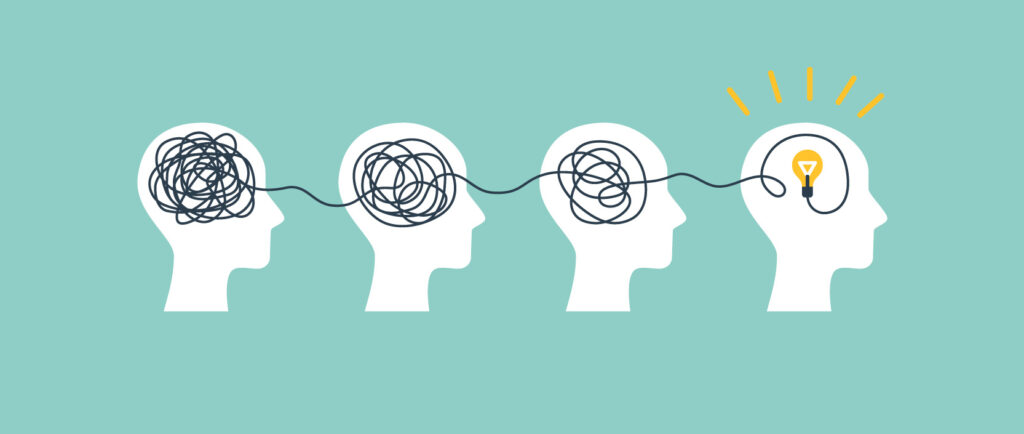
Establish Boundaries:
- Set Clear Work Hours: Define specific work hours and communicate them to family members or housemates. Establishing boundaries around your work schedule helps others understand when you’re unavailable for non-urgent matters.
- Create Physical Barriers: If possible, designate a separate room or area in your home exclusively for work. Use physical barriers such as doors or room dividers to create a visual separation between your workspace and living areas, minimizing interruptions.
- Use Signaling Devices: Employ signaling devices like “Do Not Disturb” signs or noise-canceling headphones to indicate when you’re in focus mode and prefer not to be interrupted. These visual cues can help others respect your need for uninterrupted work time.
Manage Digital Distractions:
- Limit Social Media Access: Schedule specific times for checking email, social media, and other non-work-related websites to avoid constant distractions throughout the day. Consider using website blockers or productivity apps to temporarily restrict access to distracting websites during work hours.
- Silence Notifications: Disable non-essential notifications on your devices to minimize interruptions from emails, messages, and app notifications. Set specific times to check and respond to messages rather than reacting to every notification immediately. How to Set Up Your Home Office for Maximum Productivity
- Implement Email Management Strategies: Adopt strategies such as batching emails or setting designated times for checking and responding to emails to prevent them from becoming a constant source of distraction. Use email filters and folders to prioritize important messages and reduce inbox clutter.
Maintain a Clutter-Free Environment:
- Organize Your Workspace: Keep your desk and surroundings tidy and clutter-free to minimize visual distractions. File paperwork, store office supplies, and maintain an organized workspace to create a conducive environment for focused work.
- Declutter Digital Workspace: Apply the same principles of decluttering to your digital workspace by organizing files, folders, and desktop icons. Use virtual desktops or organizing apps to streamline digital assets and make it easier to find what you need without distractions.
Practice Mindfulness and Time Management:
- Focus on Single Tasking: Avoid multitasking and instead focus on one task at a time to maintain concentration and productivity. Set clear priorities and allocate dedicated blocks of time for specific tasks to minimize cognitive overload and distractions.
- Take Regular Breaks: Schedule short breaks throughout the day to recharge and refresh your mind. Use techniques such as the Pomodoro Technique, which involves working in focused intervals followed by short breaks, to maintain productivity and prevent burnout.
- Practice Mindful Awareness: Cultivate mindfulness by staying present and aware of your thoughts and surroundings. When distractions arise, acknowledge them without judgment and gently redirect your focus back to the task at hand.
Conclusion:
Minimizing distractions in your home office requires a combination of proactive strategies, boundary-setting, and mindful awareness. By establishing clear boundaries, managing digital distractions, maintaining a clutter-free environment, and practicing mindfulness and time management techniques, you can create a focused and productive workspace conducive to achieving your professional goals. Experiment with different strategies to find what works best for you, and commit to implementing them consistently to optimize your productivity and well-being in your home office.
Personalize Your Space:
While maintaining a professional work environment is essential, don’t overlook the importance of personalization. Surround yourself with elements that inspire and motivate you, whether it’s artwork, plants, or meaningful mementos. Personalizing your workspace can boost morale, creativity, and overall satisfaction with your work environment, ultimately enhancing productivity and well-being.
Unlock Your Online Success! Watch Our Exclusive Video for FREE and Start Earning Today!

Reflect Your Personality:
- Display Personal Mementos: Surround yourself with items that hold personal significance, such as photographs, artwork, or souvenirs from travels. These mementos not only add visual interest to your workspace but also evoke positive memories and emotions, making your home office feel warm and inviting.
- Showcase Your Interests: Incorporate elements that reflect your hobbies, passions, or professional interests. Whether it’s a collection of books on your favorite topics, a musical instrument, or artwork related to your industry, integrating items that resonate with you can spark creativity and fuel your enthusiasm for work. How to Set Up Your Home Office for Maximum Productivity
- Express Your Style: Use decor elements such as color schemes, furniture styles, and accessories to express your unique sense of style. Whether your aesthetic is minimalist and modern or cozy and eclectic, design your home office in a way that reflects who you are and makes you feel comfortable and inspired.
Cultivate Inspiration:
- Create a Vision Board: Design a vision board or inspiration wall filled with images, quotes, and affirmations that reflect your goals, aspirations, and values. Displaying visual reminders of what you’re working towards can motivate you to stay focused and committed to achieving your objectives.
- Incorporate Nature: Bring the outdoors inside by incorporating elements of nature into your home office. Add potted plants, fresh flowers, or natural materials such as wood or stone to create a calming and rejuvenating atmosphere. Nature-inspired decor can help reduce stress, improve mood, and increase productivity.
- Curate a Creative Corner: Designate a specific area of your home office as a creative corner where you can engage in artistic pursuits or brainstorm new ideas. Equip this space with art supplies, sketchbooks, or a whiteboard to encourage creative expression and innovation.
Enhance Comfort:
- Invest in Comfortable Furnishings: Prioritize comfort when selecting furniture for your home office. Choose an ergonomic chair that provides adequate support and promotes good posture during long hours of work. Opt for a desk with ample surface area and storage solutions to keep your workspace organized and clutter-free.
- Add Cozy Touches: Incorporate cozy elements such as plush cushions, soft throws, or a comfortable rug to make your home office feel inviting and comfortable. Create a cozy reading nook or relaxation area where you can take short breaks and recharge when needed.
- Optimize Lighting and Temperature: Ensure proper lighting and temperature control in your home office to enhance comfort and productivity. Maximize natural light by positioning your desk near a window and use adjustable lighting fixtures to create the desired ambiance. Invest in a space heater or fan to maintain a comfortable temperature year-round.
Conclusion:
Personalizing your home office is about creating a space that reflects who you are, inspires creativity, and fosters productivity. By infusing your workspace with personal touches, cultivating inspiration, and enhancing comfort, you can transform your home office into a sanctuary where you feel motivated, focused, and at ease. Experiment with different decor elements and design ideas to create a personalized environment that energizes and uplifts you as you pursue your professional endeavors.
Establish a Routine:
Consistency is key to productivity. Establish a daily routine that includes set work hours, breaks, and designated time for tasks. Stick to this schedule as much as possible to cultivate a sense of structure and discipline. Incorporate healthy habits such as regular exercise, hydration, and healthy meals into your routine to support overall well-being and sustained productivity.
Unlock Your Online Success! Watch Our Exclusive Video for FREE and Start Earning Today!
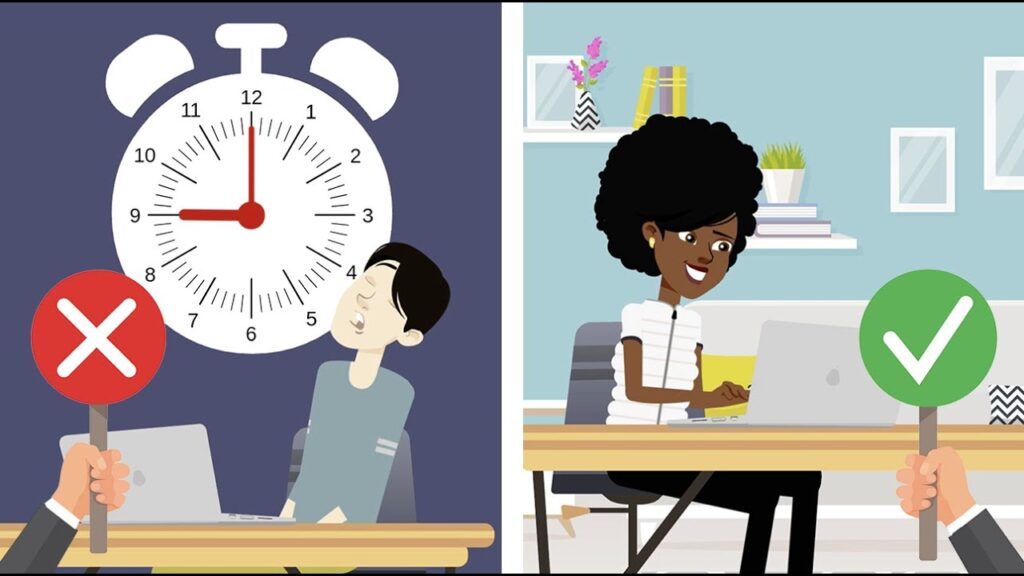
Define Your Work Hours:
- Set Regular Start and End Times: Establish fixed start and end times for your workday to create a clear distinction between work and personal time. Consistency in your schedule helps regulate your body’s internal clock and promotes a sense of routine and discipline. How to Set Up Your Home Office for Maximum Productivity
- Communicate Boundaries: Communicate your work hours to family members, housemates, or colleagues to set clear expectations and minimize interruptions during focused work periods. Encourage respect for your designated work hours to maintain concentration and productivity.
Structure Your Day:
- Plan Your Tasks: Begin each day by creating a prioritized list of tasks or a schedule outlining your objectives for the day. Break down larger projects into manageable tasks and allocate time blocks for specific activities to maintain focus and accountability.
- Allocate Break Times: Schedule regular breaks throughout your workday to rest, recharge, and prevent burnout. Use techniques such as the Pomodoro Technique, which involves working in focused intervals followed by short breaks, to maintain productivity and mental freshness.
Establish Work Rituals:
- Start with a Morning Routine: Establish a morning routine that sets the tone for a productive day. Incorporate activities such as exercise, meditation, or journaling to energize your body and mind and prepare for the work ahead.
- Create Transition Rituals: Develop rituals that signal the start and end of your workday, such as making a cup of coffee, tidying your workspace, or reviewing your accomplishments. These rituals help mentally transition between work and personal life and reinforce boundaries.
Prioritize Self-Care:
- Incorporate Healthy Habits: Prioritize self-care by incorporating healthy habits into your daily routine, such as regular exercise, nutritious meals, and adequate hydration. Taking care of your physical and mental well-being is essential for sustaining productivity and resilience.
- Schedule Downtime: Allocate time for leisure activities, hobbies, and relaxation to recharge and unwind outside of work hours. Balancing work with leisure promotes overall happiness and prevents burnout, allowing you to return to work refreshed and rejuvenated.
Flexibility and Adaptability:
- Be Flexible: While establishing a routine is important, remain flexible and adaptable to accommodate unexpected changes or disruptions. Embrace the fluidity of remote work and adjust your schedule as needed to address emerging priorities or personal commitments.
- Regularly Evaluate and Adjust: Periodically evaluate your routine to identify areas for improvement and make necessary adjustments. Reflect on your productivity, energy levels, and work-life balance, and refine your routine to better align with your goals and preferences. How to Set Up Your Home Office for Maximum Productivity
Conclusion:
Establishing a routine is a cornerstone of success in the home office environment. By defining your work hours, structuring your day, establishing rituals, prioritizing self-care, and embracing flexibility, you can create a balanced and productive routine that supports your professional and personal well-being. Consistency, discipline, and self-awareness are key to maintaining a successful routine and thriving in the remote work landscape. Experiment with different strategies and approaches to find a routine that works best for you, and enjoy the benefits of enhanced productivity, focus, and fulfillment in your home office.
Utilize Technology and Productivity Tools:
Leverage technology and productivity tools to streamline your workflow and optimize efficiency. Whether it’s project management software, communication tools, or time-tracking apps, there are numerous resources available to help you stay organized and focused. Identify the tools that align with your workflow and integrate them into your daily routine to maximize productivity and effectiveness.

Task and Project Management:
- Project Management Software: Utilize project management tools such as Trello, Asana, or Monday.com to organize tasks, track progress, and collaborate with team members. These platforms offer features such as task assignments, due dates, and kanban boards to streamline project workflows and ensure accountability.
- Task Automation: Take advantage of automation tools like Zapier or IFTTT to automate repetitive tasks and streamline workflows. Automate routine processes such as email responses, file transfers, or data entry to free up time for more meaningful work.
Communication and Collaboration:
- Video Conferencing: Conduct virtual meetings, client calls, and team collaborations using video conferencing platforms like Zoom, Microsoft Teams, or Google Meet. These tools facilitate face-to-face communication, screen sharing, and real-time collaboration, regardless of geographical location. How to Set Up Your Home Office for Maximum Productivity
- Instant Messaging: Stay connected with colleagues and collaborators through instant messaging apps such as Slack, Microsoft Teams, or Discord. Instant messaging platforms enable quick communication, file sharing, and group discussions, fostering seamless collaboration and information exchange.
Document Management and Sharing:
- Cloud Storage Solutions: Store and access documents, files, and data securely using cloud storage services like Google Drive, Dropbox, or Microsoft OneDrive. Cloud storage solutions offer convenient access to files from any device and facilitate real-time collaboration among team members.
- Document Collaboration Tools: Collaborate on documents, spreadsheets, and presentations in real-time using tools like Google Workspace (formerly G Suite) or Microsoft Office 365. These platforms allow multiple users to edit documents simultaneously, track changes, and provide feedback, enhancing teamwork and productivity.
Time Management and Productivity:
- Time Tracking Software: Monitor and manage your time effectively using time tracking tools such as Toggl, Harvest, or RescueTime. Track time spent on specific tasks, analyze productivity patterns, and identify areas for improvement to optimize your workflow and maximize productivity.
- Focus and Distraction Management: Use productivity apps like Focus@Will, Freedom, or Forest to minimize distractions and maintain focus during work sessions. These tools employ techniques such as ambient noise, website blockers, or gamification to promote concentration and reduce procrastination.
Personal Organization and Planning:
- Calendar and Scheduling Apps: Organize appointments, meetings, and deadlines using calendar apps like Google Calendar, Microsoft Outlook, or Apple Calendar. Schedule tasks, set reminders, and sync calendars across devices to stay organized and on track.
- Task and Note-taking Apps: Capture ideas, jot down notes, and manage tasks using productivity apps such as Evernote, Todoist, or Notion. Create to-do lists, set priorities, and organize information in a centralized digital workspace for easy reference and retrieval.
Security and Data Protection:
- Password Managers: Securely store and manage passwords for online accounts using password management tools like LastPass, Dashlane, or 1Password. Password managers encrypt sensitive data, generate strong passwords, and provide centralized access across devices to enhance security and streamline login processes.
- Security Software: Protect your devices and data from cyber threats with antivirus software, firewalls, and encryption tools. Install reputable security software such as Norton, McAfee, or Bitdefender to safeguard against malware, phishing attacks, and unauthorized access, ensuring the integrity and confidentiality of your digital assets.
Conclusion:
By leveraging technology and productivity tools effectively, you can optimize workflows, enhance collaboration, and maximize productivity in your home office. Whether it’s task management, communication, document collaboration, time tracking, personal organization, or security, there are myriad tools available to streamline every aspect of your work processes. Experiment with different tools and platforms to find the ones that best suit your needs and preferences, and embrace the transformative power of technology to elevate your home office productivity to new heights. How to Set Up Your Home Office for Maximum Productivity
Unlock Your Online Success! Watch Our Exclusive Video for FREE and Start Earning Today!
Thank you for read my article, How to Set Up Your Home Office for Maximum Productivity
